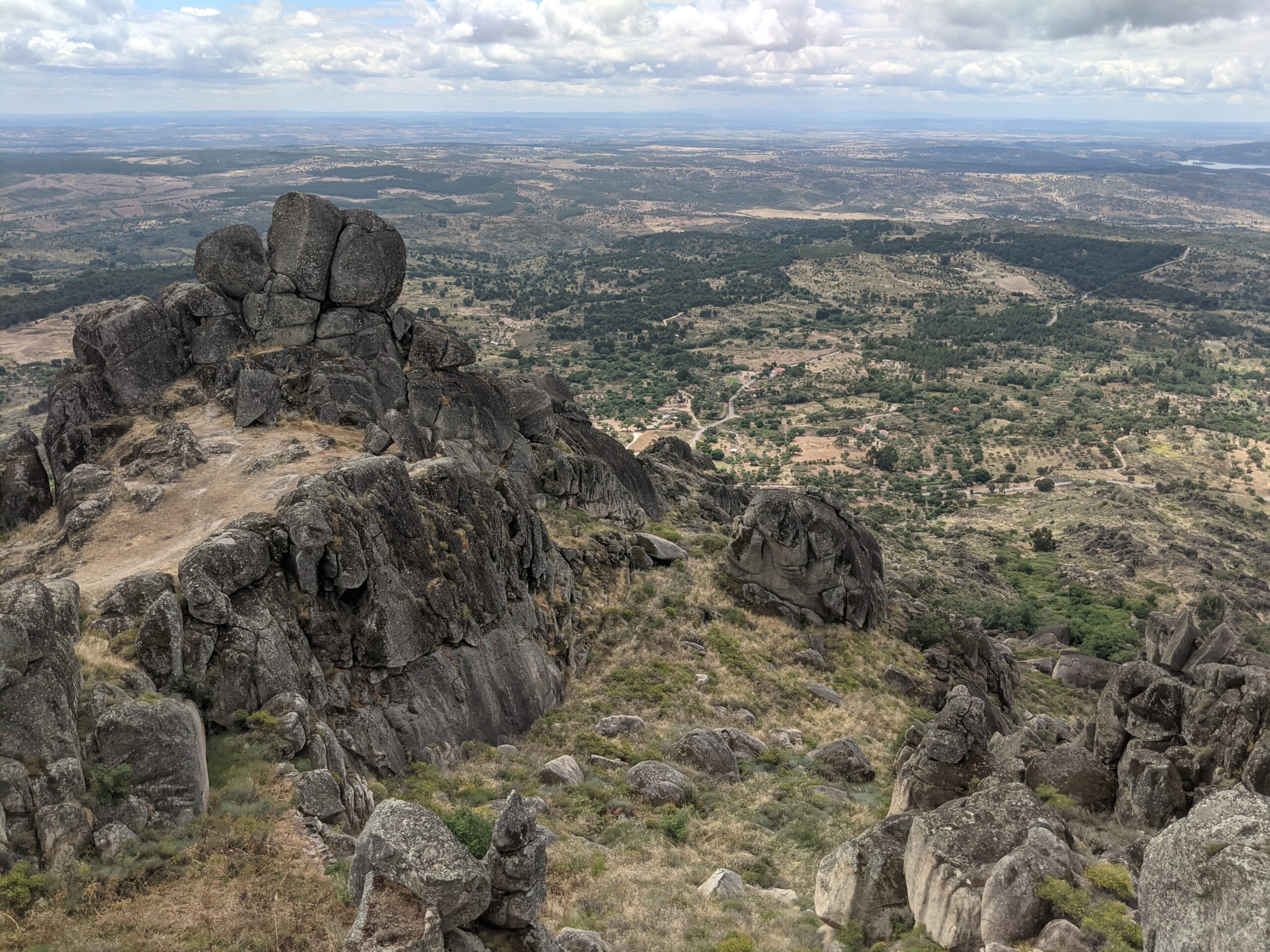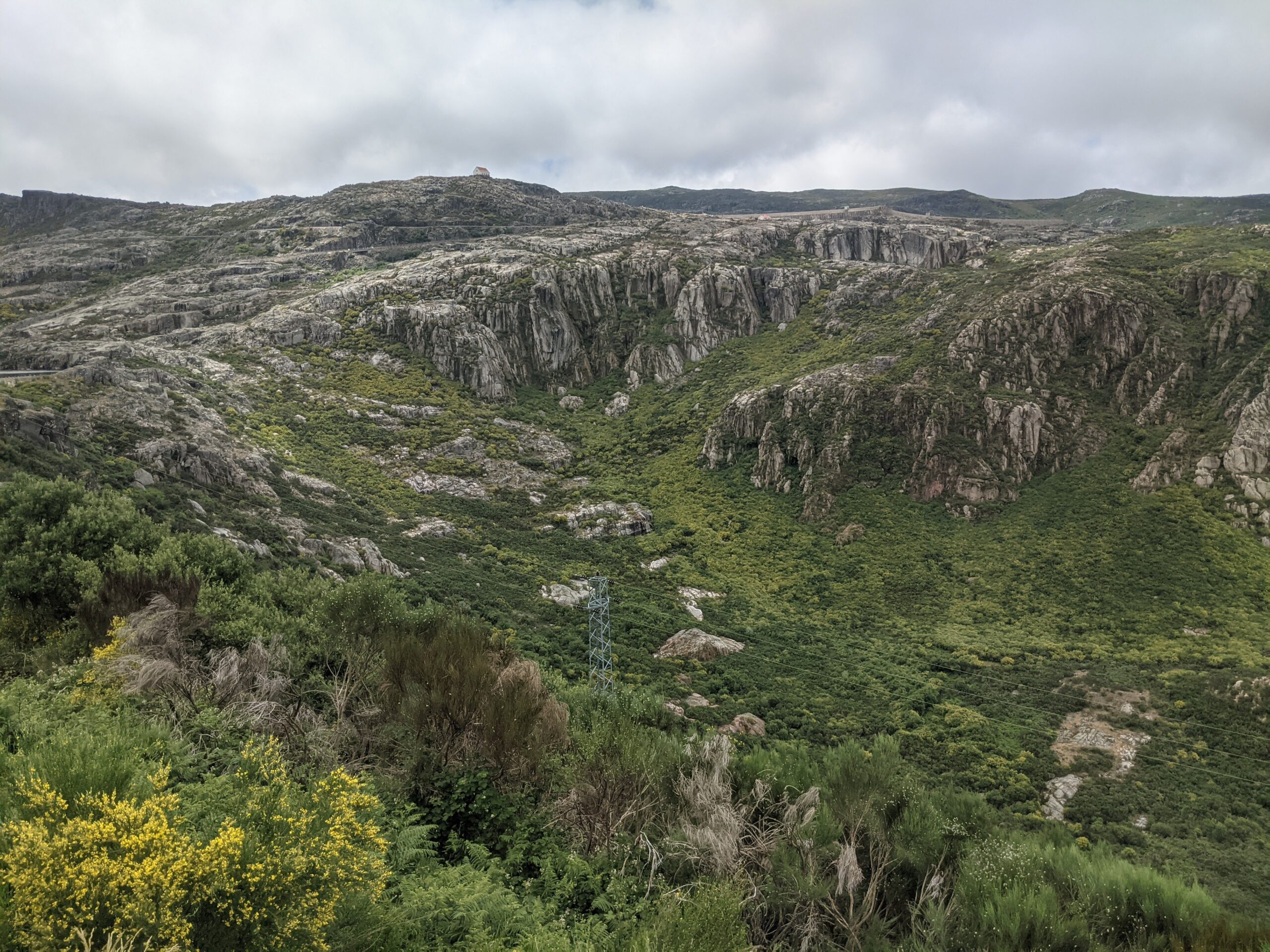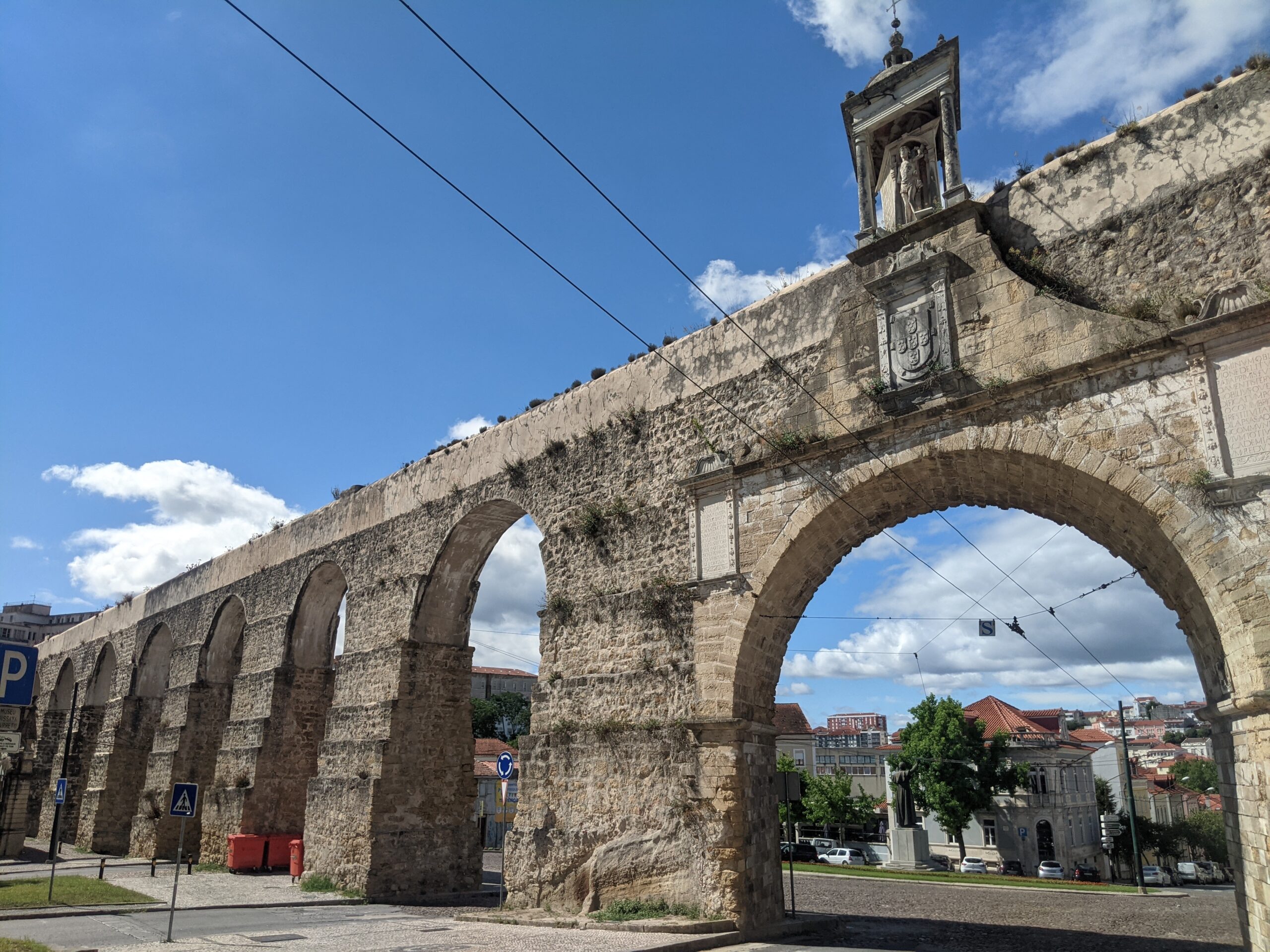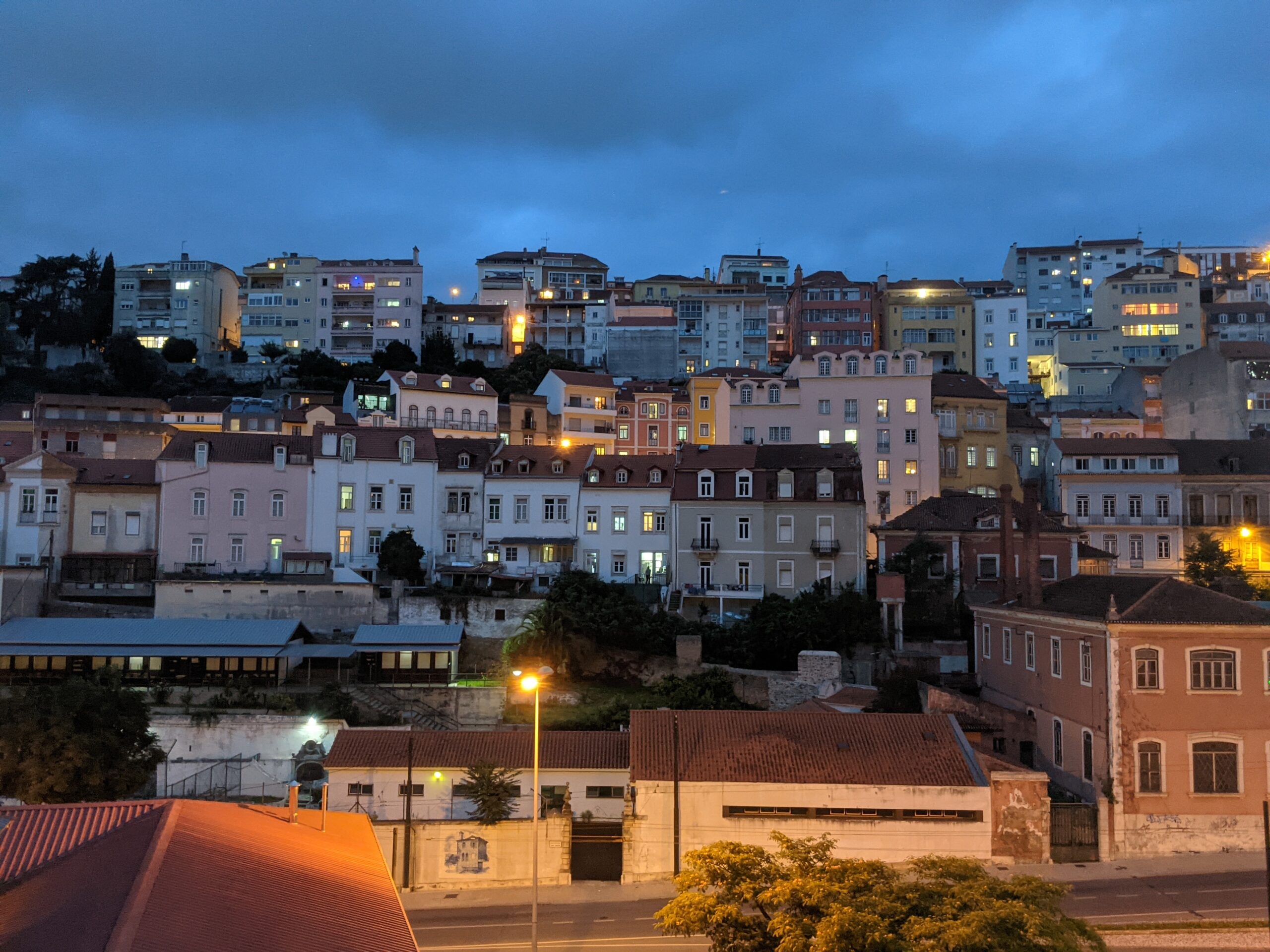Road trip in Northern Portugal: Part two
Turning back
The rain subsided after 15 minutes, and I decided – largely due to not completing a set task, to continue on the hike. The trail became steeper and slower going, through untamed foliage, and even rockier terrain. It became more of a scramble than a hike. And with visibility remaining poor, I became lost on the trail twice in a short amount of time.
With a distinct lack of progress, and a low battery on my phone that I was using for GPS – which I was relying on to get back – I made the difficult but sensible decision to turn around. It was tough for me, as I don’t like giving up, or not leaving with the sense of achievement I get from finishing hikes. Frustrated, I consoled myself with the fact it’s not worth getting lost, risking my own safety, or time and effort of rescue teams. I lived to hike another day.

Heading east
Waking up on the second morning in Serra da Estrela was similar to the day before, just slightly less wet. I had hoped to hike most days, but the fog did limit the activities I could do. I used the comfort of the lodge to research alternatives, and having a car meant I could be more flexible. So, I chose to leave the mountains behind and head further east towards the Spanish border.
The drive took me through flatter, drier terrain. Here, out of the orange soil, grew an array of delightful trees, such as cork oaks. This area was very dry, a contrast from the greener Douro region, with an almost desert-like feel. Even the aroma of the terrain was vastly different, under the warm sun, that was now shining above.

Moncato
After around ninety minutes of interrupted driving, I reached my destination – Moncato. This village has been built on an elevated outcrop of hard stone, standing tall over the surrounding plans. A narrow road circles up to Moncato, with limited space for parking on busy days – for this is a scenic destination that attracts many visitors. It is worthy of a visit, even if you may have to walk half the way up.
At the higher echelons, the houses have been designed to merge with the large boulders. And at the very top, an ancient castle – dating back to the Middle Ages – is worthy of a fantasy novel. Man-made tall walls of stone blend with huge, natural boulders, creating a hybrid fortress. It overlooks a wide expanse of land – and outlook for potential invaders. Although modern intruders are armed with no more than cameras and smartphones.





Final day in the mountains
The third day in the mountains was far more promising. Alas, it was my last there. I had planned a hike to the summit of the highest peak on mainland Portugal – Torre. On my way up, I was driving under clear skies, and stopping for photographs at many different places. I enjoyed all the views so much, and being able to cover a lot of ground in the car, I decided to make use of it for the day.
Instead of going on one long hike, I stopped for short walks here and there. With a drought of road trips during the pandemic, it was great to have this feeling of freedom again, to explore new lands, and appreciate many fine views of natural beauty.





Driving tour
The decision to drive around the park was a good one. There are lots of places on the way into the centre, and the road west out of the park, to stop and wander. Ironically, the highest peak – Torre – is a disappointment. It’s a flat area, with a car park, and the views are unspectacular. I was more impressed by the various rock formations, bodies of water, and mountain ridges.
Before leaving Serra da Estrela, I stopped at a local shop selling arts and crafts. Looking for some gifts to take home, I was enticed by the owner to try some of the famous cheese from the area – it was tasty – and I was sold.

The Portuguese countryside
Exiting the mountain range, the terrain en route to Coimbra is a mixture of small towns, vineyards on hillsides, as well as large areas of forest. In rural Portugal, away from the cities, I could envision an idealist life in the countryside, living off the land, breathing in fresh air, surrounded by nature. I think the reality may be slightly different, especially as they increasingly deal with extreme heat and forest fires in the summer.
It could be a lovely place to live, though. For a developed European country, Portugal has an air of relaxation and calm, combined with modern conveniences, as well as places to escape to. Villages and towns are dotted around the region, but for the most part, it is sporadically populated in the countryside. Both mountains and beaches are easily accessible, with cities not far away, and it seems as though there is something for everyone.

Coimbra
My last stop on this trip was in the university town of Coimbra. It is purportedly the oldest university in the world, although many cities claim their university has that title. Here, I experienced the true Portuguese summer climate, with two days of sunshine and temperatures in the high 20s and early 30s (Celsius).
The city is home to fine architecture. The old cathedral – Se Velha – impressed me the most. It is a sandy, dusty-looking relic, resembling a fortress with the defensive walls on top, sitting menacingly in the city centre. There are many other grand buildings around the city centre. I visited the National Museum Machado de Castro, which I would strongly recommend. It has a Roman Forum underneath, alongside many sculptures and paintings.




Alone and by myself
Coimbra was the one place I missed some company. That’s not to say I don’t like having company on road trips when I’m in natural settings. It’s just that I can enjoy road trips solo, or with others. In a city, I tend to feel more alone. It might be partly because in cities you are surrounded by people, mostly in social settings, and it can be difficult to meet others (unless you are one of those people who can make friends immediately).
Hostels are a good place to meet others if you want company in a city. They often have communal bedrooms, as well as shared living spaces such as kitchens, dining and living rooms. Hostels are generally well kept, if not the most luxurious, and near the centre, too.
Still, I enjoyed walking the cobbled streets, across the bridges and under the city walls. As well as more fine Portuguese cuisine. It was a relaxing way to end a fun and satisfying week touring Northern Portugal.

